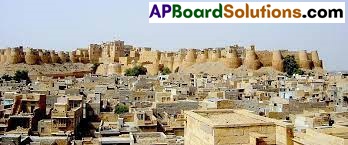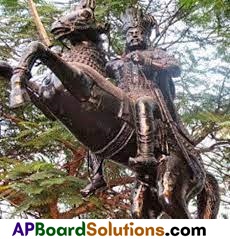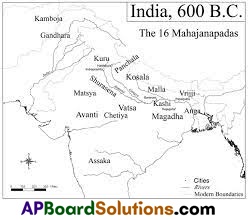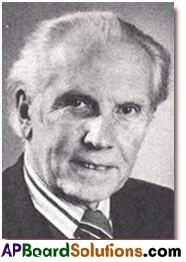Regular practice with TS 6th Class Social Bits with Answers 19th Lesson Language, Writing and Great Books improves students’ confidence and readiness for assessments and examinations.
TS 6th Class Social Bits 19th Lesson Language, Writing and Great Books
Objective Type Questions
I. Choose the correct answer and write its letter in the bracket.
1 …………. book focusses on surgery.
A) Dictionary of Medicine
B) Charaka Samhita
C) Sushruta Samhita
D) Ayurveda Samhita
Answer:
C) Sushruta Samhita
2. ………… wrote the book called Aryabhattiyam.
A) Aryabhatta
B) Ramanujan
C) Varahamihirudu
D) Kalidas
Answer:
A) Aryabhatta
3. …………. are the deeds of great heroes and heroines.
A) Biographies
B) Songs
C) Poems
D) Epics
Answer:
D) Epics
![]()
4. Mahabharata was composed by ……..
A) Vishwamitra
B) Valniiki
C) Vyasa
D) Buddha
Answer:.
C) Vyasa
5. was the language that was spoken in a large part of South India in the early days.
A) Tamil
B) Telugu
C) Marathi
D) Bengali
Answer:
A) Tamil
6. Language is used in these situation.
A) To do works in proper order
B) To get others attention
C) To create new things
D) All the above
Answer:
D) All the above
7. Language is developed between these people.
A) Those who live together
B) Those who have patience
C) Those who create equality
D) None
Answer:
A) Those who live together
8. These languages are derived from ‘Dravid’.
A) Telugu
B) Tamil
C) Kannad, Malayalam, Gond
D) All the above
Answer:
D) All the above
![]()
9. The languages are from Indo-Aryan languages
A) Sanskrit
B) Hindi, Marathi
C) Bengali
D) AIL the above
Answer:
D) AIL the above
10. ABCDEF-is from which script?
A) Devanagari Script
B) Roman Script
C) Arabic Script
D) Telugu Script
Answer:
B) Roman Script
11. a, an, 3.1 – is from which script ?
A) Roman
B) Arabic
C) Devanagari
D) Telugu
Answer:
C) Devanagari
12. Who used pictorial script ?
A) The Indus people
B) The Arabians
C) I he Romans
D) The Greece
Answer:
A) The Indus people
13. The origin of many Indian scripts at present
A) Brahmi Script
B) Deva Nagari Script
C) Telugu Script
D) Tamil Script
Answer:
A) Brahmi Script
14. This is one of stone inscriptions in Brahmi script.
A) Bhattiprolu
B) Mandadam
G) Srisailam
D) Tripuranthakam
Answer:
A) Bhattiprolu
![]()
15. In North India, they used the barks of these trees, which grew in the Himalayas for writing.
A) Tawra
B) Bhurja
C) Devadaru
D) Jittege
Answer:
B) Bhurja
16. The Vedas were taught first in this ………. form.
A) Written
B) Oral
C) Both A & B
D) None
Answer:
B) Oral
17. The main Indian epics
A) Ramayan
B) Mahabharat
C) Both A & B
D) Vedangas
Answer:
C) Both A & B
18. The Adi Kavya’ is
A) Ramayan
B) Mahabharat
C) Vedas
D) Vedangas
Answer:
A) Ramayan
![]()
19. describe conflicts between cousins and different mentalities.
A) Ramayan
B) Mahabharat
C) Vedas
D) Vedangas
Answer:
B) Mahabharat
20. wrote Mahabharat in Sanskrit.
A) Valmiki
B) Vyasa
C) Patanjali
D) Charaka
Answer:
B) Vyasa
21. wrote Ramayana.
A) Valmiki
B) Vyasa
C) Bharatha
D) Pothana
Answer:
A) Valmiki
22. The Jataka Tales were compiled before
A) 1600 – 1800 years
B) 1800-2000 years
C) 2000-2200 years
D) 2400-2600 years
Answer:
A) 1600 – 1800 years
23. Kisagotami’s son died, she requested all to give life to his son, she was taken to Buddha. Buddha told her to bring a handful of mustard seeds from this house.
A) From the house of deaths
B) From the house of no deaths
G) From the house of only one death
D) None
Answer:
B) From the house of no deaths
![]()
24. Sangam literature means
A) The poetry written by poets, poetesses and pandits
B) The poetry written by only poets „
C) The poetry written by poetesses
D) None
Answer:
A) The poetry written by poets, poetesses and pandits
25. This book explains the procedure of preparation of medicines by collecting herbs.
A) Charaka Samhita
B) Rasa Ratnakaram
C) Raja Tarangini
D) Middle Sastra
Answer:
A) Charaka Samhita
26. The book that explains about surgeries
A) Charaka Samhita
B) Sushruta Samhita
C) Maha Bhashyam
D) Dhanwantari
Answer:
B) Sushruta Samhita
27. The Aryabhattiyam was written by
A) Aryabhatta
B) Varahamihira
C) Nagarjuna
D) Patanjali
Answer:
A) Aryabhatta
![]()
28. Who said that the sun is not rotating round the earth and the earth causing of day and night formation?
A) Aryabhatta
B) Varahamihira
C) Nagarjuna
D) Patanjali
Answer:
A) Aryabhatta
29. Who invented Decimal system ?
A) Romans
B) Indians
C) Greeks
D) Cholas
Answer:
B) Indians
30. He was one of the famous Indian intellectuals.
A) Panini
B) Patanjali
C) Charaka
D) Nagarjuna
Answer:
A) Panini
31. The Buddha Charitha’ was written by
A) Aswaghosha
B) Charaka
C) Patanjali
D) Panini
Answer:
A) Aswaghosha
![]()
32. The first peotic story in Sanskrit is
A) Ashtadhyayi
B) Buddha Charitha
C) Abhignana Shakuntalam
D) Mrichchakatikam
Answer:
B) Buddha Charitha
33. 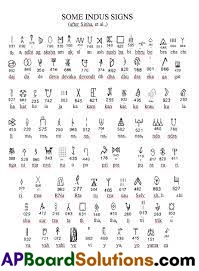
What does the picture shows ?
A) Islam script
B) Aryan Script
C) Indus Script
D) None
Answer:
C) Indus Script
34. Indus script is also called
A) Boustro pheden
B) Buddhist script
C) Jainist script
D) Aryan script
Answer:
A) Boustro pheden
35. Telugu – Anuna :: Marathi
A) Tai
B) Aai
C) Maa
D) Madar
Answer:
B) Aai
36. Vyasa: Sanskrit;: Nannaya:
A) Hindi
B) Pali
C) Telugu
D) None
Answer:
C) Telugu
![]()
37. Aryabhatta and were famous astronomours
A) Charaka
B) Sushrotha
C) Varahamihira
D) None
Answer:
C) Varahamihira
38. Charaka: Medicine :: Sushruta:
A) Medicine
B) Surgery
C) Ayurveda
D) Homeo
Answer:
B) Surgery
39. Kauravas : :: Rama: Ramayana ………….
A) Mahabharata
B) Sangam literature
C) Indus civilization
D) None
Answer:
A) Mahabharata
40. Ramayana was composed by …………….
A) Vyasa
B) Valmiki
C) Charaka
D) Aryabhatta
Answer:
B) Valmiki
![]()
41. were also initially composed and taught orally.
A) Bhaktas
B) Songs and stories
C) Vedas
D) Scripts
Answer:
C) Vedas
42. preached Dharma to fellow human beings and animals.
A) Gautama Buddha
B) Mahavira
C) Ashoka
D) Kanishka
Answer:
A) Gautama Buddha
43. script is like (अ आ इ ई )
A) Tamil
B) Telugu
C) Arabic
D) Devanagari script
Answer:
D) Devanagari script

